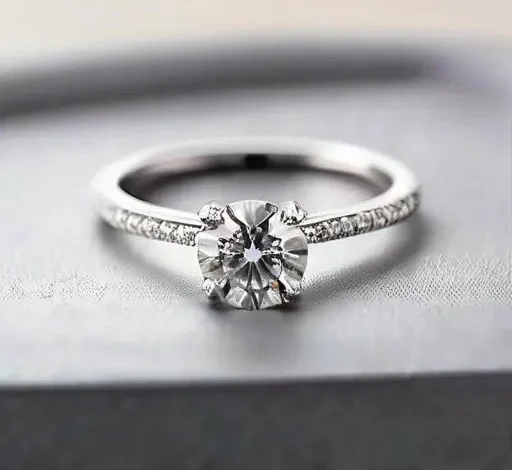The Science of Facial Rejuvenation: Techniques and Trends
The quest for youthful appearance has driven innovation in the realm of facial aesthetics for decades. Modern facial rejuvenation is no longer solely about chasing fleeting trends, but rather a sophisticated understanding of facial anatomy, aging processes, and the ever-evolving techniques designed to restore a refreshed and natural look. This understanding allows practitioners to tailor treatments to individual needs, considering factors like skin type, bone structure, and personal goals. We will delve into the fundamental science underpinning facial rejuvenation, exploring the essential techniques and emerging trends that are shaping the future of this dynamic field.
Understanding the Aging Face
The aging process affects the face in multiple ways, contributing to changes in skin texture, volume, and underlying structure. These changes include:
- Loss of Collagen and Elastin: Leads to wrinkles, fine lines, and skin laxity.
- Volume Loss: Fat pads in the face diminish, causing hollowing and a sunken appearance.
- Bone Resorption: Changes in bone structure contribute to a less defined facial contour.
- Muscle Weakness: Facial muscles weaken, leading to sagging and drooping.
Addressing these multifaceted changes requires a holistic approach that combines different techniques to achieve optimal results.
Essential Techniques in Facial Rejuvenation
Several techniques are considered essential in modern facial rejuvenation, each targeting specific aspects of the aging process:
Surgical Techniques
- Facelift (Rhytidectomy): Addresses sagging skin and deep wrinkles by lifting and tightening facial tissues.
- Neck Lift (Platysmaplasty): Improves the appearance of the neck by tightening neck muscles and removing excess skin.
- Eyelid Surgery (Blepharoplasty): Corrects drooping eyelids and removes under-eye bags.
Non-Surgical Techniques
- Botulinum Toxin Injections (Botox): Relaxes facial muscles to reduce the appearance of wrinkles caused by muscle contraction.
- Dermal Fillers: Restore volume loss and smooth out wrinkles by injecting hyaluronic acid or other biocompatible substances.
- Chemical Peels: Exfoliate the skin to improve texture, reduce pigmentation, and minimize fine lines.
- Laser Resurfacing: Uses laser energy to remove damaged skin layers and stimulate collagen production.
- Microneedling: Creates micro-injuries in the skin to stimulate collagen production and improve skin texture.
Emerging Trends in Facial Rejuvenation
The field of facial rejuvenation is constantly evolving, with new technologies and techniques emerging to address specific patient needs. Some notable trends include:
- Personalized Treatments: Tailoring treatment plans based on individual facial anatomy, skin type, and aging patterns.
- Minimally Invasive Procedures: Focusing on techniques that offer less downtime and reduced risk of complications.
- Regenerative Medicine: Utilizing techniques like platelet-rich plasma (PRP) and stem cells to stimulate natural tissue regeneration.
- Combination Therapies: Combining different techniques to achieve synergistic effects and address multiple aspects of facial aging.
The future of facial rejuvenation lies in a deeper understanding of the science behind aging and the development of innovative, personalized, and minimally invasive treatments. Staying informed about these advancements allows individuals to make informed decisions about their aesthetic goals and choose the most appropriate options for achieving a refreshed and natural-looking appearance.
Choosing the Right Approach
Navigating the world of facial rejuvenation can feel overwhelming, given the myriad options available. The key is to approach the process with careful consideration and realistic expectations. Before pursuing any treatment, it’s crucial to consult with a qualified and experienced professional who can assess your individual needs and recommend the most appropriate course of action. A thorough consultation should involve a detailed discussion of your goals, a comprehensive evaluation of your facial anatomy, and a clear explanation of the risks and benefits associated with each treatment option.
Questions to Ask During Your Consultation
- What are the potential benefits and risks of this procedure?
- What is the expected recovery time?
- How long will the results last?
- What is your experience with this procedure?
- Can I see before and after photos of your previous patients?
Don’t hesitate to ask questions and express any concerns you may have. A reputable practitioner will be transparent and forthcoming with information, ensuring that you feel comfortable and confident in your decision. Remember, the goal is not to achieve a completely different look, but rather to enhance your natural features and restore a more youthful appearance. It’s also vital to consider your lifestyle and budget when choosing a treatment. Some procedures require significant downtime, while others may necessitate ongoing maintenance to sustain the results.
Maintaining Your Results
Regardless of the specific treatments you choose, maintaining your facial rejuvenation results requires a commitment to a healthy lifestyle and a consistent skincare routine. This includes:
- Sun Protection: Daily use of sunscreen with a high SPF is essential to prevent further skin damage and premature aging.
- Hydration: Drinking plenty of water helps keep your skin hydrated and plump.
- Healthy Diet: A balanced diet rich in fruits, vegetables, and antioxidants can promote skin health and radiance.
- Regular Skincare: A consistent skincare routine that includes cleansing, exfoliating, and moisturizing can help maintain the results of your treatments and prevent future signs of aging.



